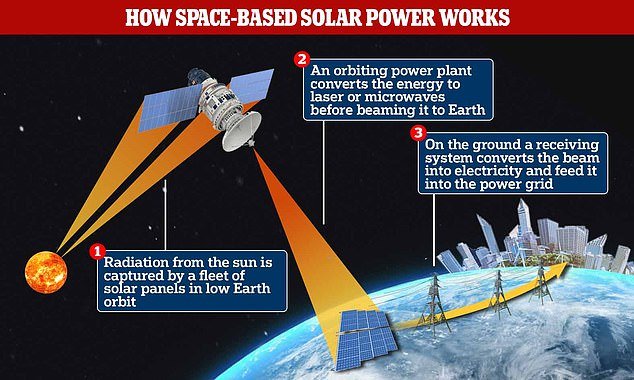Space-Based Solar Plants Could Provide Electricity to The Earth
The idea of harvesting solar energy from space and transmitting it to Earth via microwaves seems too good to be true, but it may become a reality as soon as 2035. The Space Energy Initiative (SEI), a partnership of industry and academic entities, is working on a project called Cassiopeia, which aims to launch a cluster of massive satellites into high Earth orbit to gather solar energy and send it back to Earth. There's enough space in orbit for the solar power satellites and the Sun provides an immense amount of energy. A small area around the geostationary Earth orbit receives more than 100 times the amount of energy per year than what the world is projected to consume by 2050.

In early 2022, the UK government pledged £3 million in funding for space-based solar power (SBSP) initiatives, after a study by consulting firm Frazer-Nash showed that the technology was feasible. The Space Energy Initiative (SEI) hopes to secure a significant portion of that funding. The satellites would consist of hundreds of thousands of identical small modules manufactured on Earth and assembled in space by robots, which would also perform maintenance and servicing.
The solar energy captured by the satellites would be transformed into high-frequency radio waves and transmitted to a rectifying antenna on the ground, which would then turn the radio waves into electricity. Each satellite has the potential to provide around 2GW of power to the grid, making each one comparable in terms of output to a nuclear power plant. On Earth, sunlight is scattered by the atmosphere, but in space, it is directly received from the Sun without obstruction. As a result, a space-based solar panel can collect much more energy than an equivalent panel on Earth.
Other similar projects are also being developed. In the United States, the Air Force Research Laboratory (AFRL) is focusing on some of the key technologies required for a system like this, through a project called Space Solar Power Incremental Demonstrations and Research (SSPIDR). This includes enhancing the efficiency of solar cells, converting solar energy into radio frequency, beamforming, reducing drastic temperature changes on spacecraft components, and developing designs for deployable structures. The team has successfully demonstrated new components for a sandwich tile, which is utilized to transform solar energy into radio waves.
Reference articles: